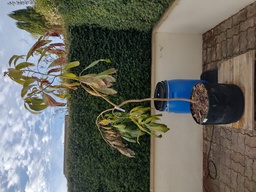Blog: The freeze of January 2025
January 24, 2025
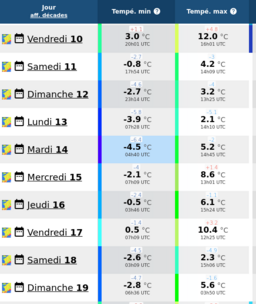
For about a week around January 11 through January 19 we had freezing temperatures overnight and usually in the early morning. One particular night stands out, Tuesday January 14, where the official minimum was recorded at -4.5°C at the airport some 4 km away. Yes, I really do need to get a better temperature monitoring setup, because those temperatures don’t really match my experience here and when I did have a digital outside thermometer here it was often within +/-2°C of the official measurements.
In terms of damage to the trees, this was definitely worse than the December freeze, despite official minimums then being recorded at -4.8°C and -5.5°C on the 30th and 31st, respectively. It could of course be that the trees were now in a worse condition going into the frost than they were at the end of December — or that it was simply colder in my particular location this time than last time. That night with the drop to -4.5°C was definitely what did the majority of the damage, but it could also have been the fact that it was freezing (and generally rather cold) in the days/nights leading up to it.
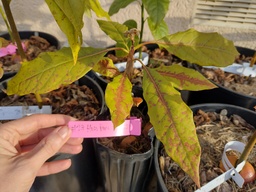
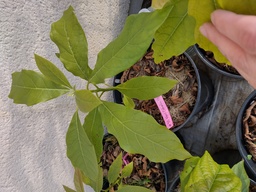
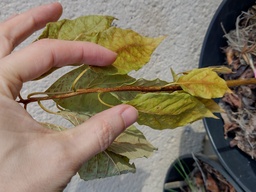
The effects of this freeze were:
4 young (6 months old or younger) trees (#34, #37, #38, #39), that were unprotected other than staying close to the house, were completely defoliated and died back to the roots — note that these had no damage whatsoever in the previous freezes. I moved these into the house and they are definitely still alive, despite suffering extensive stem damage. I can see that all of them have new, red buds swelling near the base of the stem so I expect they will regrow. In one case there was already a secondary stem (of about 2 cm) with leaves that was hiding within the label I had put on the tree; this very small secondary stem showed no damage and is now growing vigorously.
Of the 25 trees next to the house under (unsealed) polycarbonate sheets, only 6 trees showed no or very little damage: #8, #10, and #28 (seedlings of Hass from Peru), #19 and #24 (seedlings of Fuerte from Spain), and #30 (seedling of Hass from Colombia). The other trees all had varying degrees of damage: from all leaves fried to mild blotching (especially along the leaf spines). I did not see very much trunk damage; I think only one or two trees might die outright, or die down to the ground at the very least.
My big tree (~4 years old) had new scaffolding put in place on January 13th so the frost cloth would not hang on the leaves/branches; it was also heated and appears to have suffered no additional damage. It is, however, looking quite miserable overall compared to how it looked at the end of the summer. I’ll be happy as long as it can make it through winter, as I’m expecting it to bounce back in Spring and Summer. I measured the trunk at 9cm in circumference, which is small for a 4-year-old tree, but quite okay considering it was grown indoors for 3.5 years and likely had its growth stunted quite a bit by the lack of sunlight.
Everything in the little garden greenhouse (with a water barrel and heating) was perfectly fine, as expected. However, I need to be more vigilant about airing the greenhouse because one tree is starting to show signs of what I believe are fungal infections on some of its leaves, essentially round spots of brown or grey along the margins. In any case, it is not cold damage.
Although I’m unhappy about the harsh weather, that’s reality and I can’t change it. I am happy that some trees seem to be displaying a better resistance to cold than others; that’s the natural selection that I am looking for. I think it also validates the approach of sowing many seeds, in that each additional seed sown is an additional chance to win the genetic lottery.
